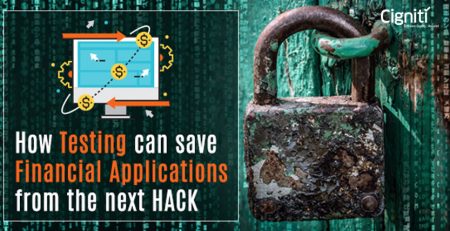The cashless and contactless future of payments
In addition to the health status and the economic status of the global population, the coronavirus outbreak is also threatening the centuries-old method of currency-based payments.
As there is a common notion about the virus being spread through cash-based currency, there has been an accelerated shift toward the cashless alternatives for making payments.
Card-based payments, digital or app-based payments, and other similar payment technologies were slowly gaining ground before the COVID-19 virus hit the world. But now, they have become the go-to method for payments and transactions, and are deemed the ‘safer’ choice for making purchases.
As per a pre-COVID report, the global contactless payment market size was expected to grow from USD 10.3 billion in 2020 to USD 18 billion by 2025, at a Compound Annual Growth Rate (CAGR) of 11.7% during the forecast period.
Now as the situation has tremendously sped up, we can expect to see a huge variation in these projections.
As many as 20 major EU banks, including Deutsche Bank and Santander, are set to announce details for a new payments initiative, referred to as the Pan European Payment System Initiative (PEPSI), in the very near future. By relying on the EU’s Target Instant Payment Settlement (TIPS) system, the initiative will enable real-time fund transfers to handle payments.
With disruptors launching innovative payment solutions, such as online payment processing systems including Amazon Pay, Google Pay, and Apple Pay, we are certainly headed toward a cashless and contactless future of payments.
As people are openly embracing these new ways of making payments, the payment solutions providers must ensure that they do not fall short on their promises.
Also read: Quality assurance – An imperative in the world of zero-touch technology
In these times of uncertainty, a robust, secure, and smooth mode of payment becomes essential for developing the trust between the users and the payment solutions providers.
Cashless vs. contactless – what is the difference?
Before talking about the difference between these two modes of payment, let us first talk about the one similarity among them.
Both cashless and contactless payments eliminate the involvement of cash-based currency from a transaction.
Both of these methods are much faster and secure than cash-based payments, and result in a smoother customer experience.
Now, talking about the difference between the two:
Cashless payments may include online transfers, card-based payments, digital wallets, or mobile payments. These may or may not require a contact between the sending and receiving terminals.
Contactless payments, however, utilize Near-Field Communication (NFC) or Radio Frequency Identification (RFID) technologies to complete a payment without involving a contact or touch. The NFC or RFID-enabled cards use the zero-touch technology and only require a swipe or wave in front of the receiving terminal to trigger the payment.
Quality assurance supporting the cashless payment ecosystem
The acceleration of digital transformation has consequently pushed the adoption of several digital-native technologies including cloud and data centers.
As the world is essentially operating remotely, the adoption of cloud-based solutions aid them to keep functioning normally. The cloud brings the business benefits of scalability and flexibility, and thus becomes the ideal choice for supporting innovative solutions like cashless and contactless payment technology.
Nanda Padmaraju, Senior Vice President spoke at length about the emerging banking technologies on the QATalks podcast, along with Paul Trotter, Dy. CTO at Atom Bank.
Nanda said, “Every bank today has an app for its customers, both on iOS and Android. The customer is oblivious to the fact that there are legacy applications running with most of these banks and expects a superior customer experience for all of their transactions. Customers have zero-tolerance these days and can quickly vent their anger on various social media platforms. In this backdrop, testing the functional and non-functional aspects thoroughly, and embedding quality engineering early on in the lifecycle is extremely important and imperative for the banks to succeed in this digital age. So, QA and QE are the top order in terms of a CTO or a CIO level risk in today’s board-room meetings.”
Listen to: Embracing Newer Technologies for Banks With a Focus on Quality@Speed
Paul advises, “We don’t need to become expert at everything. We just need to be experts at the right things and then stay current so that the customers can feel and experience exactly as they would be expecting. So, know when you should be using the software and how to configure the software. And, absolutely making certain that the data is used appropriately so that the service, the quality, and experience for the customer is all improved as you go along. In terms of choosing components, that’s largely based on what’s the real benefit.”
Therefore, when we talk about disrupting the payment economy, software quality assurance and quality engineering enable the payments solutions providers to fortify their capabilities and ensure that their customers receive only the best of their services.
How can we help
With our experience of being the core banking Digital Transformation and testing partner for pioneering mobile-only banks in US & UK, we have vindicated our capabilities in areas such as omni-channel banking, retail banking, corporate banking, centralized banking, mortgages, cards and payment gateways. We bring in-depth experience in testing across diverse industry standard products such as T24, Finacle, Flexcube, Bancs24, & Vision Plus, and compliance with regulations such as BASEL, BCBS 239, SEPA, AML, FATCA, etc.
We understand that functional and transactional accuracy, ease of access, 24/7 availability, & performance are key to any banking app. We have successfully delivered testing services for nearly 20 years, implementing its Test Center of Excellence, delivering Managed Testing Services, and providing end-to-end testing services for leading banking companies across multiple geographies. Our client testimonials and recognition by leading industry analysts are proof of our reliability and capabilities.
Our proven tools and accelerators for the Banking space positively impact the efforts involved and reduce the time-to-market for our clients. Schedule a discussion with our experts today.





Leave a Reply